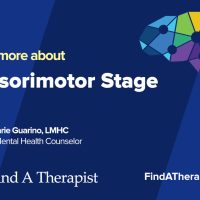How Post-Traumatic Stress Disorder Affects The Brain
Published on August 23rd, 2018
Updated on January 3rd, 2024

Post-traumatic stress disorder (PTSD) is a disorder that a person may develop if he or she has experienced at traumatic event. PTSD is a serious disorder that affects a person’s sense of safety and security. It creates different symptoms that are difficult to cope with on a daily basis. People with PTSD will experience symptoms like:
- Nightmares or night terrors
- Muscle tension or trembling
- Hyper-arousal
- Flashbacks
- Denial and avoidance behavior
- Isolation and withdrawal from friends and family
- Panic attacks
- Mood swings
- Irritability and unpredictable aggression or rage
- Substance use
- Insomnia
- Difficulty focusing
These symptoms are the result of the brain’s struggle to cope with and understand the traumatic event that has occurred. The brain is impacted in different ways after experiencing a traumatic event. There are several different areas of the brain that are affected by trauma or abuse. Three major areas of the brain that are affected by PTSD are the amygdala, hippocampus, and prefrontal cortex.
The Amygdala
The amygdala is the part of the brain that is responsible for processing fear and emotional responses. A PTSD patient becomes hypersensitive to anything that reminds him or her of the traumatic event. As a result, the patient will experience a hyperactive stress and fear reaction. This will engage the nervous system, which will cause the body to react in a fight-or-flight response. When a patient is triggered, this response will result in feelings like:
Sponsored by

Choose a therapist to work with and start healing with 20% off from BetterHelp.
Click Here- Nausea
- Lightheadedness
- An imminent sense of danger
- An urgency to escape his or her surroundings
- Panic attacks
- Stress and emotional reactivity
The Hippocampus
The hippocampus is the memory center of the brain. The memory functions are severely affected when a person experiences trauma. The hippocampus stores memories for later use. Things around the patient that remind him or her of aspects of the traumatic event trigger these memories.
Example: If a person was assaulted next to a bakery, the smell of baking bread could cause a flashback. This is because the hippocampus made the connection between the scents of bread in the present with smelling the bread during the assault.
With PTSD, a patient’s hippocampus will function improperly. This will cause the patient to not be able to discern between the past and present. The amygdala’s emotional response to the trigger will result in the patient reacting as if he or she is reliving the traumatic situation.
The Prefrontal Cortex
The function of the prefrontal cortex is to regulate complex functioning. The prefrontal cortex plays a major role in the functioning of thoughts, emotions and behavior. The amygdala triggers a response from the prefrontal cortex. The regulatory functions of the prefrontal cortex are negatively impacted in the brain of a patient with PTSD. This results in the patient being less able to control his or her emotional and behavioral response to stress.
Each of these regions of the brain are interconnected. Each affect each other and each can be stimulated as a result of the others. These three areas of the brain are the most affected in a patient with PTSD. With counseling, the damaging affects to these areas of the brain can be mended. With commitment and patience, the patient can heal and recover from PTSD.
Sponsored by

Find an affordable therapist online with 20% off from BetterHelp.
Click Here






Leave A Reply